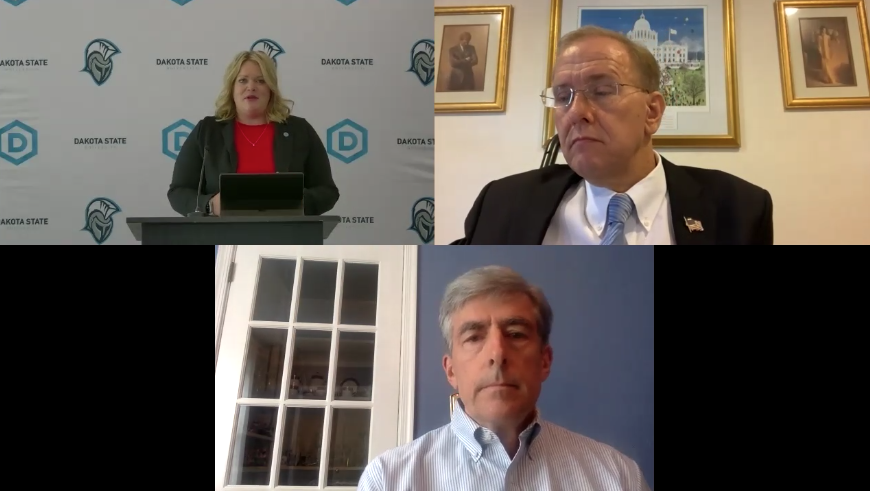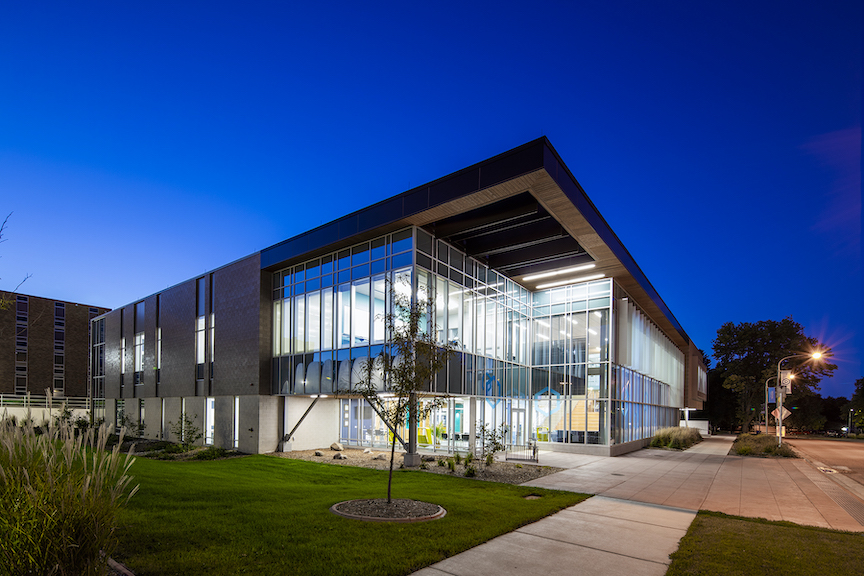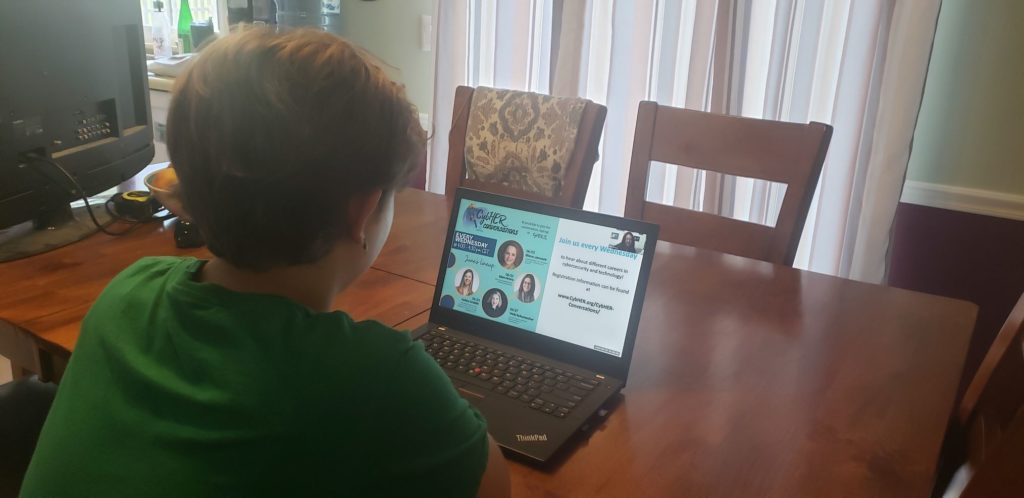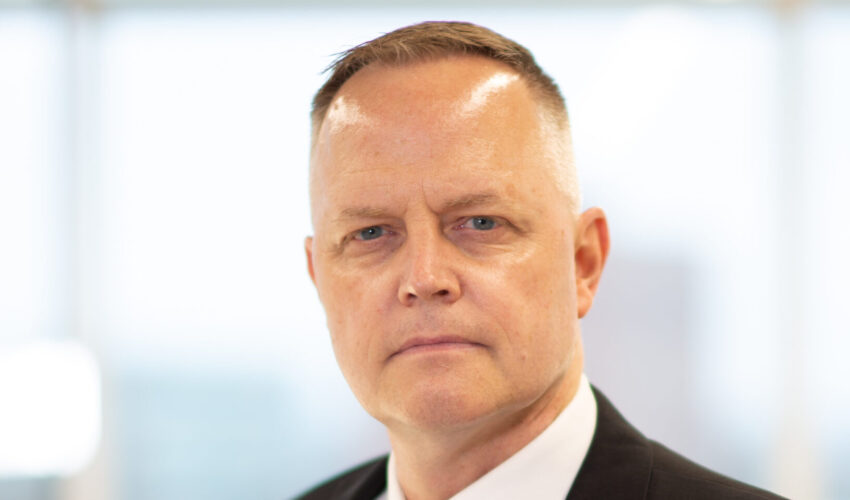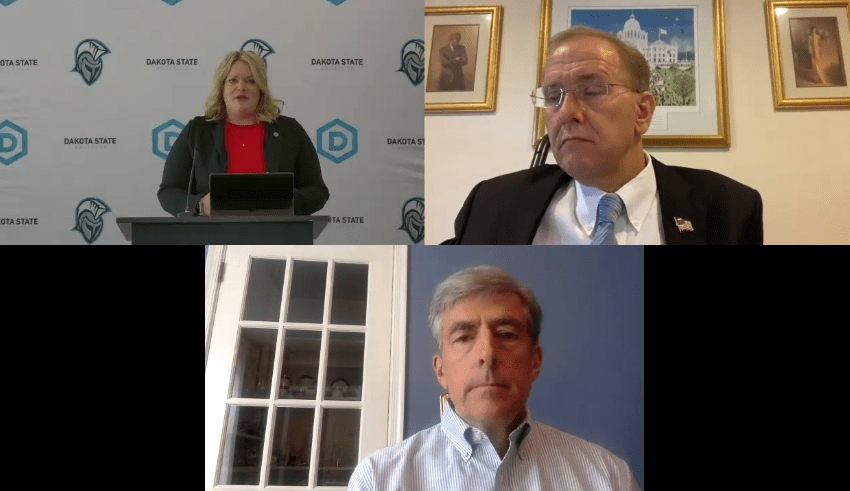Growing the federal cyber workforce: Hear from national leaders
Sept. 14, 2020
This paid piece is sponsored by Dakota State University.
Dakota State University has long been dedicated to preparing students for leading positions in the world of cyber. As the field continues to expand, so does the need for a qualified workforce in public and private sectors.
Today, more than one in three public sector cyber positions remain open, and the gap between applicants and open jobs continues to widen. Education and workforce development are essential to helping fill these positions.
The demand highlights increasing needs for early cyber education, additional ways to educate workers in the field and the necessity of bridging the technology talent gap in government. The Cyberspace Solarium Commission released its most recent white paper, “Growing a Stronger Federal Cyber Workforce,” during a webinar with Dakota State University.
The webinar featured a panel of leading cyber workforce development experts and was moderated by Dr. Ashley Podhradsky, the associate dean of the Beacom College of Computer and Cyber Sciences and an associate professor of digital forensics. The panel included:
- Eric Schmidt of Schmidt Futures, the chairman of the National Security Commission on Artificial Intelligence, a technical adviser to the board of Alphabet and the former executive chairman and CEO of Google.
- Commissioner Chris Inglis of the Cyberspace Solarium Commission, the Looker Distinguished Visiting Professor of Cyber Studies at the U.S. Naval Academy and a former deputy director of the National Security Agency.
- Commissioner Jim Langevin, a congressman from Rhode Island and a senior member of the House Armed Services Committee.
- José-Marie Griffiths, the president of Dakota State University.
- Pat Engbretson, the dean of the Beacom College of Computer and Cyber Sciences.
The overall message of the panel was that our country needs bold actions to advance its cyber workforce. Schmidt suggested that the United States needs to reimagine recruiting and advancing its artificial intelligence workforce.
The National Security Commission on Artificial Intelligence leader shared that the government is unprepared for the technical challenges of the AI age.
One way to address the issue would be to create a civilian form of a cyber academy, Schmidt explained.
“What would happen is you would get a certain amount of education in return for a guarantee that you would work in the government in a civilian capacity.”
Schmidt acknowledged that the people you would want to work for the government are likely working in the private sector where the pay is higher. He believes one way to fill government positions is through academia.
“I think we should do it by starting with education because then we’ll keep them,” he concluded.
As the cyber world touches everyone in some way, Inglis said he thinks it is important that all are educated in at least the principles of cybersecurity.
“People are not simply beneficiaries of cyberspace/the internet or victims of cyberspace but an integral part,” Inglis said.
Everyone who makes use of cyberspace would benefit from knowing more about its nature. A way to address this, Inglis added, would be through a cyber awareness program that would teach users in the same way that children are taught how to properly cross the street.
Langevin continued the conversation, focusing on the importance of reaching students early with K-12 curriculum, outreach and providing cyber industry mentors who are diverse and inclusive.
Dakota State is committed to helping reach K-12 students with a variety of outreach programs. Each summer GenCyber camps provide high school students with hands-on experience learning to hack, fix and explore cybersecurity. This camp is free to attendees through grants from the National Security Agency and National Science Foundation.
An annual GenCyber Teachers Camp helps middle school and high school teachers of science, technology, engineering and math to incorporate cybersecurity into their classrooms.
Additionally, the CybHER program, which is focused on empowering, motivating and educating girls and women in cybersecurity, has a number of outreach programs. The organization was founded by Podhradsky and Dr. Pam Rowland, an assistant professor of cybersecurity at Dakota State who’s also the director of CybHER MadLabs and the Center of Excellence in Information Systems.
The annual GenCyber Girls in CybHER Security Camp, which is supported by the NSA, is the largest girls-only residential camp in the United States. The program for students in grades 6-9 focuses on showing them the variety of career opportunities in cyber fields and introducing them to successful women in STEM careers.
This year in response to the pandemic, CybHER created an online outreach CybHER Conversations. The free weekly program, which has reached over 300 girls in 32 states and eight other countries, features a cybersecurity or technology professional guest speaker. This exposes attendees to a variety of potential career paths while connecting them to successful people in these industries. This is now an ongoing program.
Beyond outreach, Dakota State also is dedicated to ensuring graduates are addressing the needs of the nation, Griffiths shared. This is done through evolving curriculum, ongoing research and collaboration with both the public and private sectors.
“We are educating students for jobs that do not yet exist,” Griffiths said.
Teaching students strong foundations and concepts is essential in building future-oriented security experts, Engbretson added. This foundation of core computational concepts includes skills in areas such as programming languages, network communications protocols and cryptography operating systems. All of that is included in the curriculum at DSU.
The Cyberspace Solarium Commission’s white paper addresses the above topics and provides five elements to help build a stronger cyber workforce:
- Organizing a federal cyber workforce with a foundation for all government work that is adaptable to an organization’s individual mission.
- Recruiting through investing in existing programs such as CyberCorps: Scholarship for Service and the Centers of Academic Excellence.
- Using apprenticeships and upskilling opportunities to help support cyber employee development through hands-on experience.
- Retaining employees through pay flexibility and growing career pathways.
- Stimulating growth in the talent pool for careers in cyber.
The Cyberspace Solarium Commission was established in the John S. McCain National Defense Authorization Act for fiscal 2019 to “develop a consensus on a strategic approach to defending the United States cyberspace against cyberattacks of significant consequences.”
Listen to a recording of the webinar here.
To learn more about Dakota State’s academic cyber programming, visit the Beacom College of Computer and Cyber Sciences.

